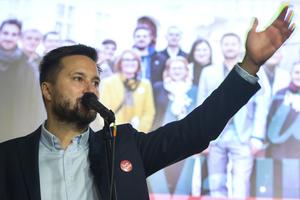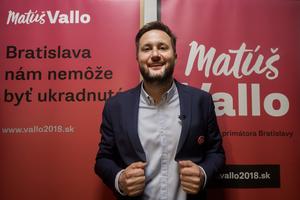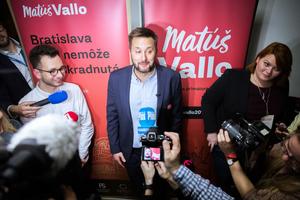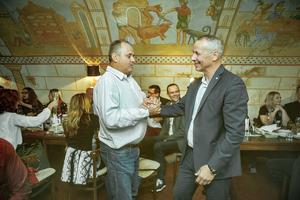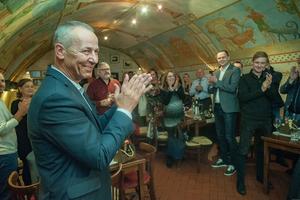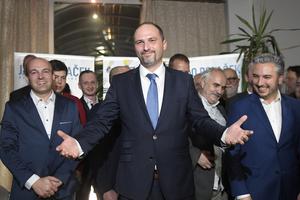What was the turnout?
The Statistics Office registers 4.49 million eligible voters. Of them, 48.67 percent cast their ballots in the November 10 municipal elections, according to the official results presented by the Statistics Office on November 11.
The highest turnout was recorded in Prešov Region where 53.18 percent of the eligible voters turned out, while the lowest turnout was recorded in Bratislava Region where 43.74 percent of the eligible voters made it to the polling stations.
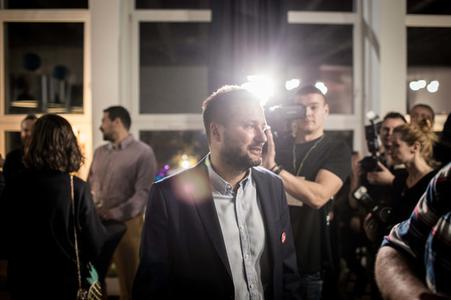
As for the regional capitals, the highest turnout was in Prešov (54.34 percent), while the lowest in Košice (35.71 percent).
The turnout in the municipal elections oscillates around 50 percent of eligible voters. In the 2002 municipal elections, 49.51 percent cast their ballots, while 47.65 percent turned out in 2006, 49.69 percent in 2010, and 48.34 percent in 2014.
Which party was the most successful?
Independent candidates were clear winners in the November 10 elections. They won 1,232 mayoral posts (which represents 42.42 percent of all mayoral seats), and 7,301 seats in the municipal councils (which represents 35.36 percent).
In the 2014 elections, independent candidates took 1,104 mayoral posts (37.95 percent) and 6,000 seats in the municipal councils (28.91 percent).
The strongest parliamentary party in the municipal elections was Smer, which took 592 mayoral seats (20.39 percent). However, it was a significant drop compared to the 2014 elections, after which it controlled 847 mayoral positions (or 29.11 percent).
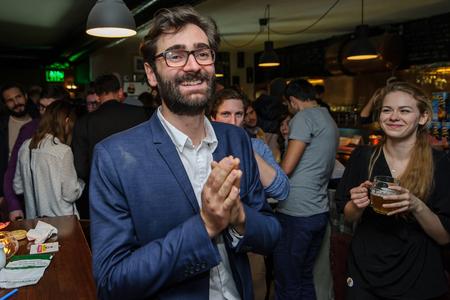
The party also reported a big drop in the number of municipal councillors. While four years ago, it won 5,123 seats (24.68 percent), now it only has 3,692 (17.88 percent).
The second strongest party in the municipal elections was the Slovak National Party with 160 mayors (5.51 percent), followed by the non-parliamentary Christian Democratic Movement with 157 mayoral posts (5.40 percent). Next came Most-Híd with 127 mayoral posts (4.37 percent) and the non-parliamentary Party of the Hungarian Community (SMK), which will control 115 mayoral posts (3.96 percent).
Of the remaining parliamentary opposition parties, Sme Rodina will have 11 mayors (0.37 percent), Freedom and Solidarity (SaS) seven mayors (0.24 percent), the Ordinary People and Independent Personalities (OĽaNO) one mayor (0.03 percent), and the far-right People’s Party – Our Slovakia (ĽSNS) one mayor (0.03 percent).
The parties were more successful when forming coalitions.
In terms of deputies for local councils, KDH won 2,350 seats (11.38 percent), SNS 1,678 seats (8.12 percent), SMK 1,248 (6.04 percent), Most-Híd 915 (4.43 percent). Other parties and coalitions filled less than 300 posts in the municipal councils.

Who won the race in Bratislava?
Slovakia’s capital will have a new mayor for the following four years. The race was won by architect Matúš Vallo, an independent candidate running with the support of the non-parliamentary Progressive Slovakia and Spolu, who received 36.54 percent of the vote.
Second came independent candidate Václav Mika, former director of the public-service broadcaster RTVS, with the support of 22.86 percent of voters. He was followed by incumbent Ivo Nesrovnal (also running as independent) with 18.42 percent, and candidate of the centre-right opposition parties, Ján Mrva, with 17.27 percent, as stems from the official results.
Who are the mayors of the city boroughs in Bratislava?
The voters in Bratislava could also elect mayors of the city boroughs:
Old Town: Zuzana Aufrichtová (SaS, OĽaNO, KDH, Sme Rodina, OKS, NOVA, Zmena Zdola, DÚ); 36.59 percent
Ružinov: Martin Chren (independent); 34.21 percent
Podunajské Biskupice: Zoltán Pék (Most-Híd, SaS, Sme Rodina, OKS, NOVA); 20.82 percent
Vrakuňa: Martin Kuruc (independent); 94.19 percent
New Town: Rudolf Kusý (independent); 58.49 percent
Rača: Michal Drotován (independent); 43.45 percent
Vajnory: Michal Vlček (independent); 50.90 percent
Devín: Ľubica Kolková (independent); 61.27 percent
Devínska Nová Ves: Dárius Krajčír (SaS, Sme Rodina, NOVA); 50.67 percent
Dúbravka: Martin Zaťovič (SaS, OĽaNO, KDH, Sme Rodina, OKS, NOVA, Zmena Zdola, DÚ); 90.78 percent
Karlova Ves: Dana Čahojová (independent); 69 percent
Lamač: Lukáš Baňacký (SaS, OĽaNO, KDH, Sme Rodina, OKS, NOVA, Zmena Zdola, DÚ); 46.50 percent
Záhorská Nová Ves: Jozef Krúpa (independent); 60.61 percent
Čunovo: Gabriela Ferenčáková (SaS, OĽaNO, KDH, Sme Rodina, OKS, NOVA, Zmena Zdola, DÚ); 63.01 percent
Jarovce: Jozef Uhler (independent); 71.40 percent
Petržalka: Ján Hrčka (SaS, NOVA, KDH, OKS, Sme Rodina); 32.68 percent
Rusovce: Lucia Tuleková Henčelová (independent); 50.76 percent
Who will be the mayors in other regional capitals?
In the second biggest city in Slovakia, Košice, Jaroslav Polaček, the candidate for five opposition parties (SaS, KDH, SMK, NOVA and OKS), received the most votes: 43.29 percent. He defeated the candidate of the ruling Smer and Slovak National Party (SNS), Martin Petruško, who received only 23.82 percent and independent Alena Bašistová, who earned 14.84 percent, according to the official results.
Voters in Žilina elected independent candidate Peter Fiabáne, who won the race with 48.06 percent of votes.
Banská Bystrica re-elected Ján Nosko, running as an independent candidate. He received 75.19 percent of the vote.
The winner of the mayoral race in the city of Trenčín is the incumbent Richard Rybníček, with 72.40 percent support.
Andrea Turčanová, who ran with the support of KDH, OĽaNO and NOVA, won the election in Prešov, garnering 45.73 percent of the vote.
Independent candidate Peter Bročka, who was supported by 62.82 percent of voters, won the race in Trnava.
In Nitra, independent candidate and organiser of the For a Decent Slovakia protests, Marek Hattas, was elected new mayor, winning 42.28 percent of votes.


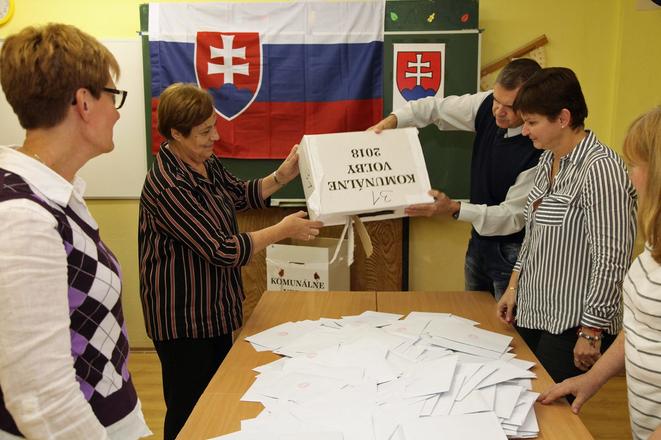 (source: TASR)
(source: TASR)
